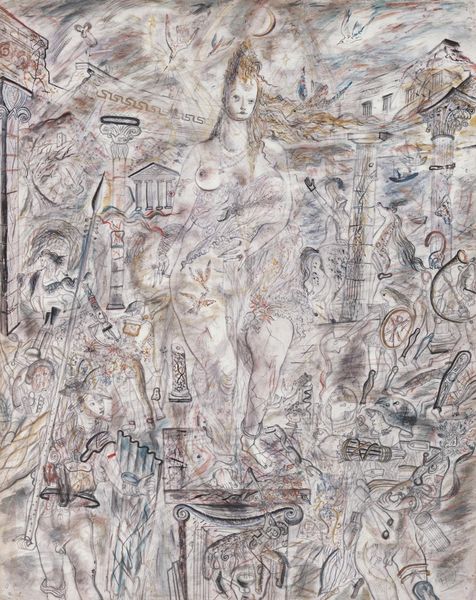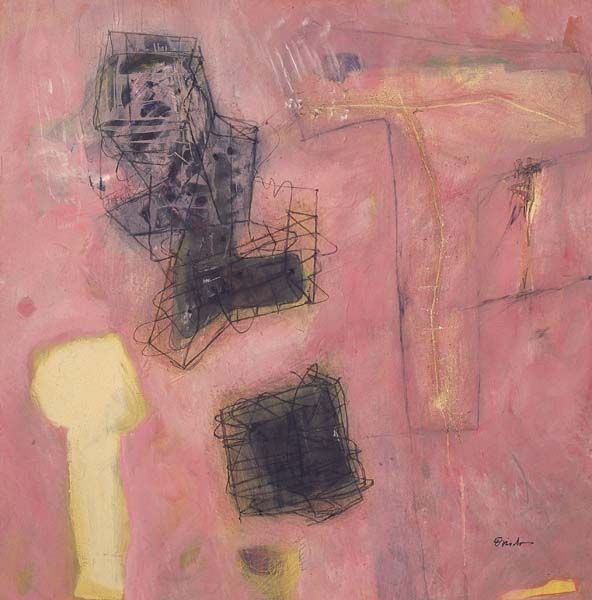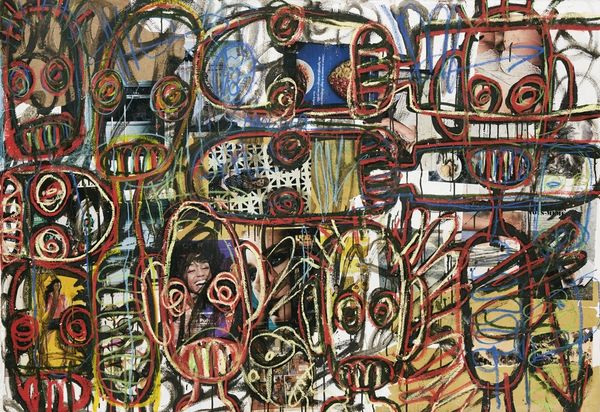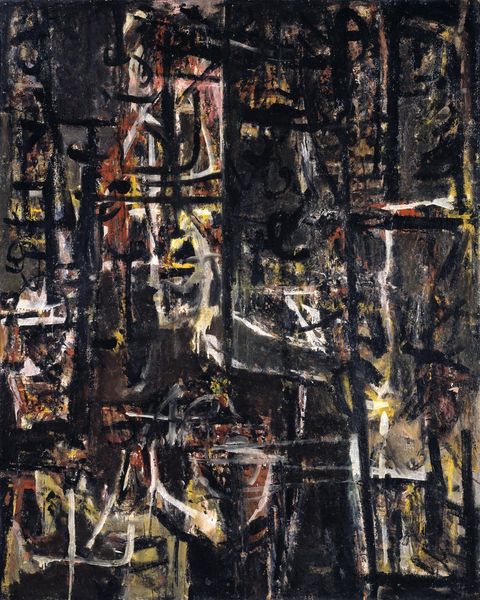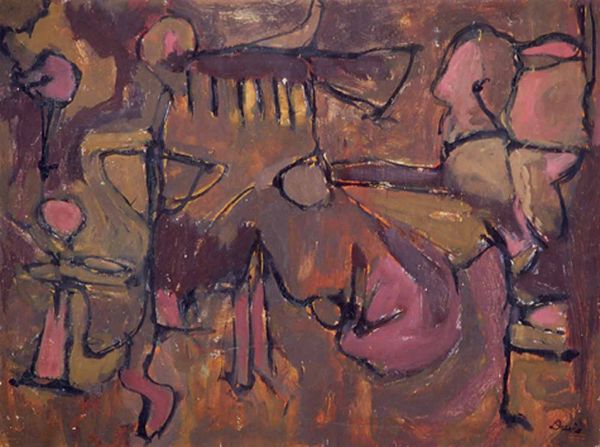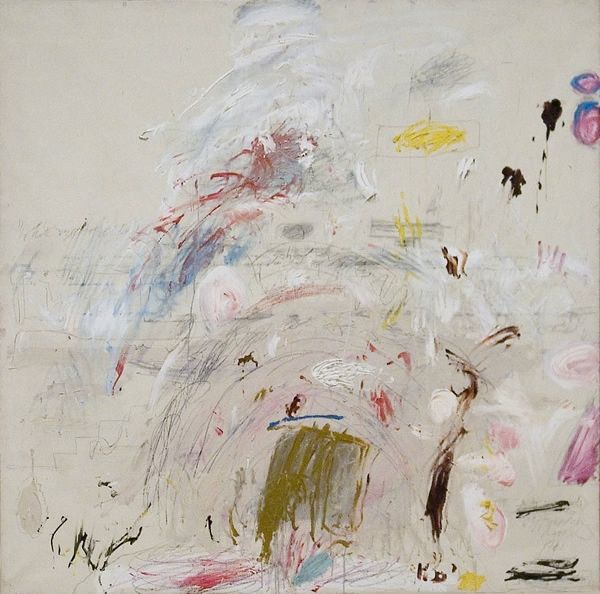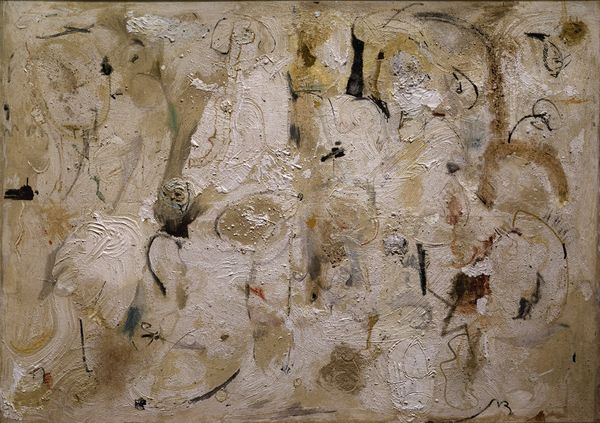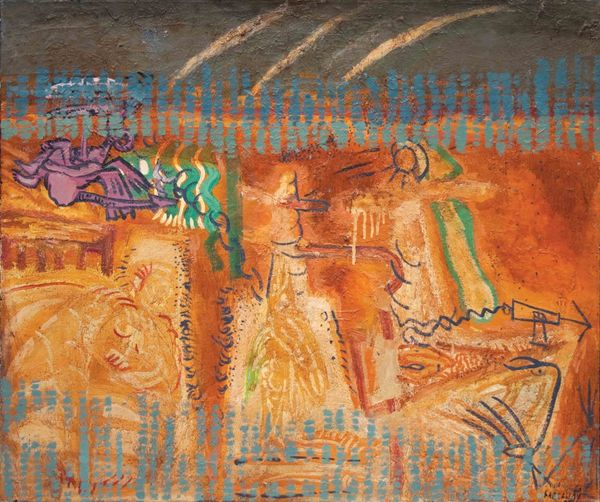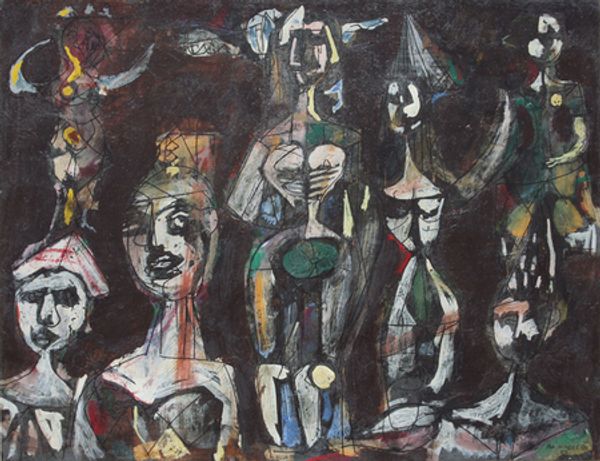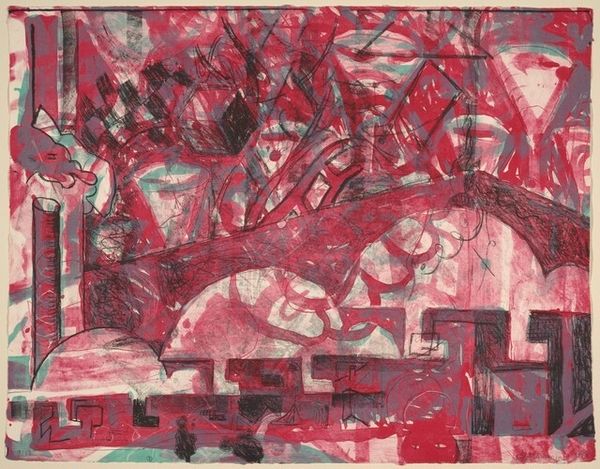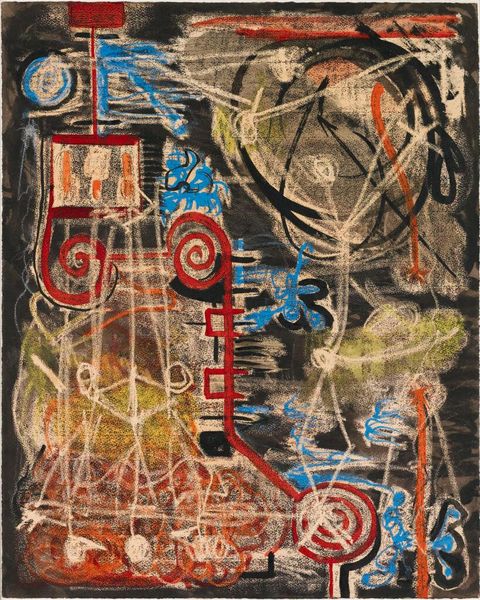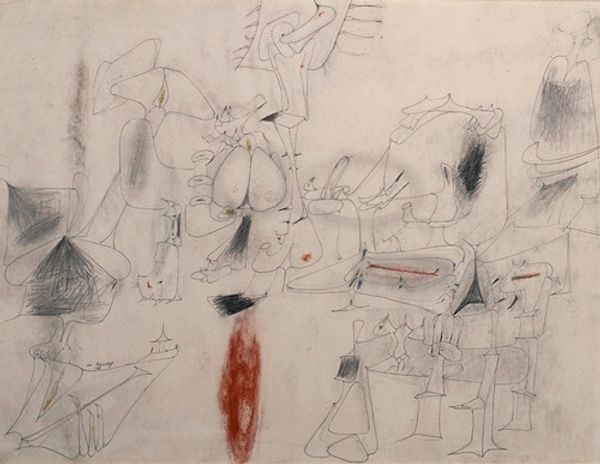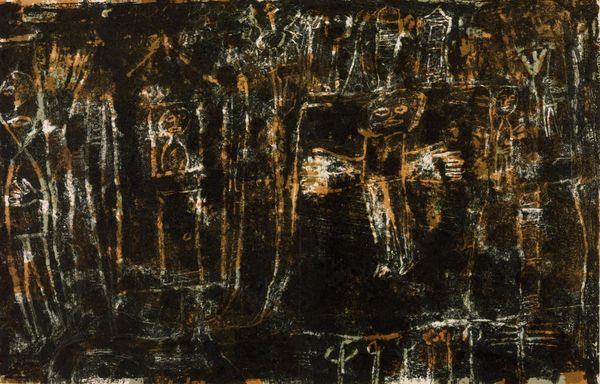
mixed-media, painting, acrylic-paint
#
abstract-expressionism
#
mixed-media
#
abstract painting
#
painting
#
acrylic-paint
#
form
#
acrylic on canvas
#
geometric
#
abstraction
#
line
#
mixed medium
#
mixed media
#
modernism
Copyright: Adolph Gottlieb,Fair Use
Curator: We're looking at "Garden 5024" by Adolph Gottlieb, a mixed-media piece characteristic of his abstract expressionist style. Editor: My first impression is chaotic and somewhat unsettling. There's a tension in the lines, and the color palette, though muted, doesn't quite offer respite. It feels claustrophobic, even aggressive. Curator: The tension you're sensing can be read through Gottlieb's historical context. This period was marked by post-war anxieties, the burgeoning Cold War, and existential questioning, especially among artists. Editor: You can definitely feel that historical anxiety in the density of the forms and shapes, and how they crowd each other in the canvas. Tell me more about his technique. It feels intuitive yet structured. Curator: Gottlieb uses geometric shapes and lines which float against and are embedded within a pale backdrop, and the arrangement suggests an exploration of boundaries and the interplay between intention and accident. It's tempting to seek clarity, to impose order on it. Editor: The composition, though abstract, almost implies figures—totemic forms rendered in rough textures, standing amidst what I’d almost call symbolic debris. Do you feel it has something to say about power, history, or identity? Curator: Absolutely. Abstraction itself became a vehicle to speak to collective trauma and socio-political upheavals without being representational. What stories and perspectives can be unearthed here? Consider, for example, Gottlieb’s relationship with indigenous art… Editor: Right, the “totemic” suggestion rings even stronger now. Even without overt symbols, it's undeniably evocative and prompts one to connect formal attributes with broader social themes and narratives. Curator: It’s in works like these where we come to a deeper understanding of modernism's function beyond formal concerns—it became a canvas where anxieties and contestations around social identity were articulated. Editor: It does challenge how we look at abstract work—forcing us to move past purely aesthetic readings. Curator: Indeed. Its chaotic nature opens conversations on what it means to experience historical turbulence. Editor: A powerful lesson about how a painterly surface can reflect deeper social currents.
Comments
No comments
Be the first to comment and join the conversation on the ultimate creative platform.
